Munster And Muenster Cheese Have More Differences Than Just Spelling

At first glance, Munster and Muenster cheese don't appear all that different from each other, but dig a little deeper, and you'll see that they're about as different as champagne and prosecco. In fact, both champagne and Munster are protected by an Appellation d'Origine Contrôlée (AOC), which translates to "controlled designation of origin." Its AOC is the reason you can't make champagne anywhere outside of the Champagne wine region and still call it champagne.
Munster cheese's AOC behaves similarly. Even if cheese is made in the Munster style, if it isn't produced in the specified region in France, you legally can't call it Munster. Other restrictions aim to control production methods to maintain quality for Munster producers, but that's a general idea.
Muenster is the name given to a type of cheese made in the United States that imitates some of Munster's characteristics. It isn't required to adhere to as strict of standards, so the quality is generally lower than Munster, accompanied by a lower price. Still, Muenster is the American cheese child of French Munster, so there are more than a few similarities.
Read more: 30 Healthy Snack Ideas That Won't Ruin Your Diet
What Is Munster Cheese?

Munster cheese is a semi-soft, washed-rind cheese made from unpasteurized cow's milk originally produced by Benedictine monks living in the French region of Alsace-Lorraine in the 7th century. It gets its name from the town that surrounded the monastery: Munster. Not to be confused with the German city of Munster.
Up there in the French Vosges mountains, the monks would use the cheese as a substitute for meat on days that they were meat-fasting. As you get closer to Lorraine, you're more likely to hear Munster referred to as géromé. The AOC accommodates the difference by classifying the cheese as Munster-géromé.
Munster cheese is white with a red-orange rind. The colorful rind is the product of Brevibacterium linens (B. linens), a type of bacteria applied to the outside of the cheese wheel as part of the washed rind process to protect it from harmful bacteria and give it flavor. Traditionally, cumin is added to the cheese, although coriander is sometimes substituted. Munster has a savory, tangy taste with a pungent, earthy aroma.
What Is Muenster Cheese?
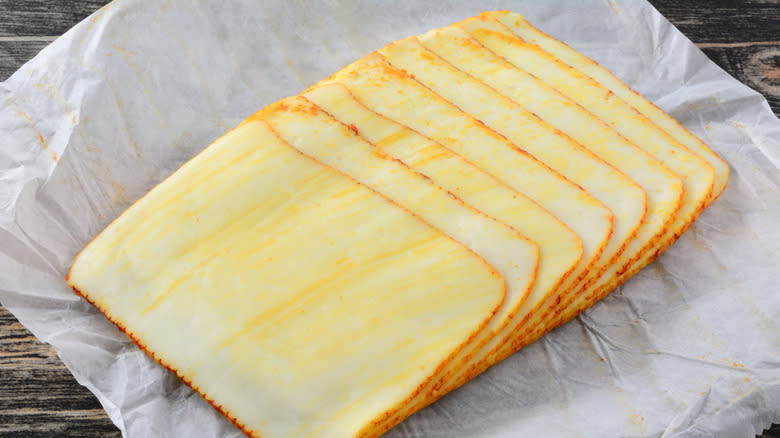
Muenster cheese was first created in the 19th century by Wisconsin-based French immigrants attempting to develop an American Munster. It's still a semi-soft cheese, though it's harder than French Munster, with a white color and an orange rind. It's made from pasteurized cow's milk and is a younger cheese, being aged for no more than seven weeks. Muenster cheese is, most commonly, processed cheese made with industrial equipment for high-volume output.
Somewhat tangy, the flavor of muenster is relatively bland, comparable to a mild white cheddar. It's an excellent cheese for cooking since it won't overpower other ingredients and melts easily. Because of this, muenster cheese is a common choice for grilled cheese sandwiches, as a burger topping, or even as a cheese dip with pretzels.
They Are Produced Differently
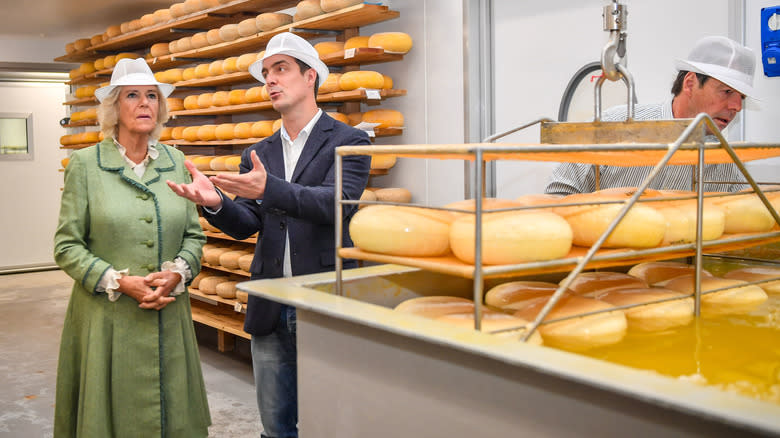
Despite the seemingly endless varieties of the stuff, all cheese is essentially processed milk. So, when we talk about different types of cheese, we are talking about how they are produced. More than anything else, this is where Munster and Muenster differ the most.
French Munster is produced according to the guidelines of its AOC, which dictate production standards. The cheese is made from unpasteurized cow's milk with a washed rind. Washed rind means that, as it ages, it is periodically rubbed with a cloth soaked in a salty brine filled with B. linens bacteria. Munster is then aged for roughly two months, depending on the size of the wheel.
American muenster, on the other hand, is a processed cheese made from pasteurized cow's milk. It doesn't have a washed rind, even though it has the characteristically red-orange exterior of a washed rind cheese. The orange 'rind' of muenster is actually from annatto, a food dye commonly used to make cheeses appear more yellow or orange. Annatto is made from the seeds of the tropical achiote tree and has been used as a cheese dye since the 16th century. After the cheese curds have been processed, they are placed in their rectangular molds and allowed to set for 24 hours before being aged for five to seven weeks.
They Taste Different
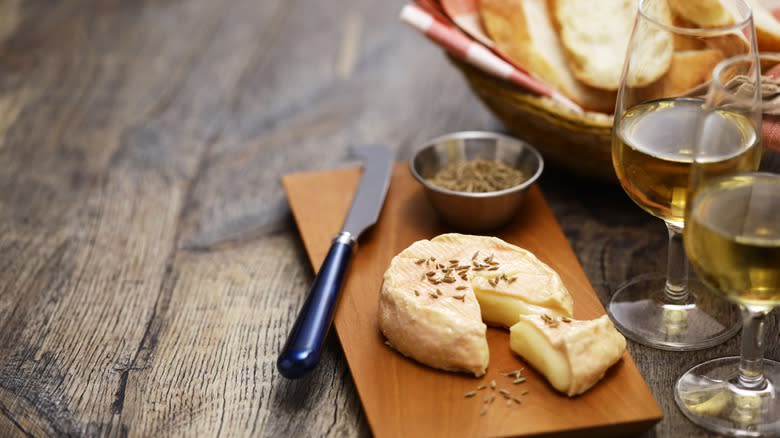
Comparing the taste of mass-produced foods to artisanal ones isn't a fair fight, but for the sake of differentiating the two cheeses, it must be done. Washed rind cheeses are notoriously stinky with big, meaty flavors, and Munster is no different. Munster has a bold, earthy flavor profile resulting from its washed rind and longer aging. You could describe Munster as having a beefy flavor with notes of mushroom and garlic.
If you were to try Munster and Muenster side by side, the differences would be obvious. Muenster is comparatively bland. There is a distinct tangy nuttiness to Muenster that differentiates it from other processed cheeses, but that's not to say that its flavor is anything more than mild. This isn't meant to disparage Muenster. For people who like milder cheeses, this may be exactly what they're looking for.
They Look Different
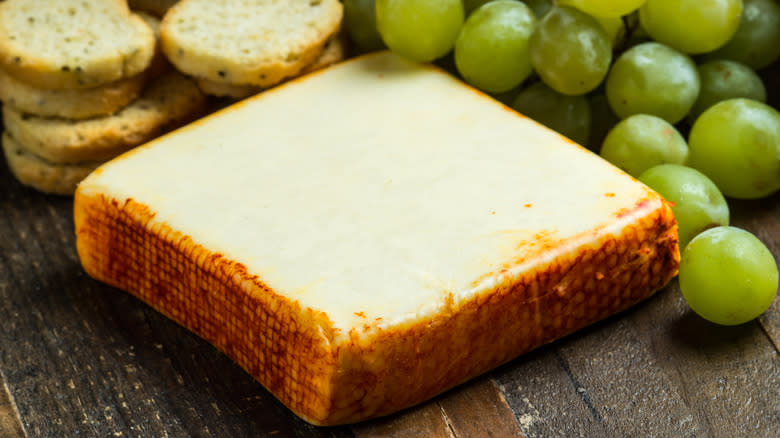
By far, the easiest way to tell Munster and Muenster apart is by the way they look. Munster is produced as a cheese wheel. When the milk is curdled, the curds are separated and formed into disks of whatever size the producer chooses. American Muenster comes in rectangular bricks and, when sliced, will be square white pieces of cheese with an orange border.
Speaking of the orange border, the rind is another giveaway. Munster's iconic red-orange rind comes from the B. linens bacteria, which play an integral part in its washed rind. The washed rind has a unique rippled look to it, and the orange coloring is present but faint. Muenster's orange rind is produced through food dye and has no rippling. It's also a deeper shade of orange than Munster.
They Smell Different

If all you know is mild Muenster, it may surprise you to learn that Munster is one of the stinkiest cheeses in the world. Washed rind cheeses generally have a reputation for smelling like sweaty feet, and Munster doesn't fall far from the tree. The B. linens bacteria is responsible for the foul odor just as much as it's responsible for its delicious taste.
Muenster isn't a washed rind cheese, so it doesn't share the stink. Muenster doesn't smell like very much of anything, least of all something offensive. Muenster falls on the opposite end of the stinky cheese spectrum, alongside cheddar and Swiss.
They Feel Different
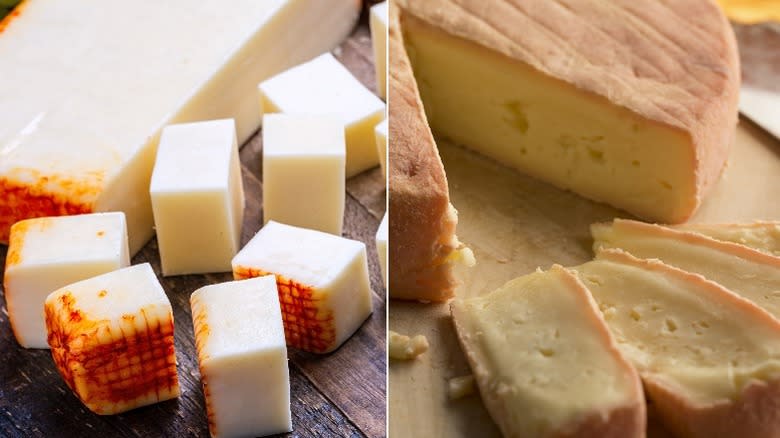
The texture of the cheese can vary quite a bit from one brand to the next since Munster is the type of cheese that gets softer the longer it ages. That said, Munster is typically quite a bit softer than Muenster. You can fairly easily spread it over a cracker or a tough piece of bread.
Muenster is soft, almost rubbery, in texture. If you were to eat it with crackers, you'd be more likely to break off a piece and place it on the cracker rather than use a knife to spread it. You can melt Muenster and turn it into a spreadable, or dippable, cheese, but on its own, it's noticeably harder than Munster.
They Aren't Equally Available

One not-so-small reason people don't understand the difference between Munster and Muenster is that depending on where you live, you may not see them both for sale. Particularly in the United States, French Munster cheese is going to be nearly impossible to find without a personal connection with a cheese importer or a little internet know-how.
The Food and Drug Administration (FDA) regulates all things edible in the U.S., including cheese. We won't get too deep into the weeds of regulatory law here, but essentially, Munster cheese can't be sold in the United States because it's made from unpasteurized milk. Raw milk cheeses can be sold if they've been aged for more than 60 days, but apparently, Munster doesn't qualify. Muenster, on the other hand, is widely available. You can find it in virtually every grocery store's cheese aisle.
They're Not The Same Price
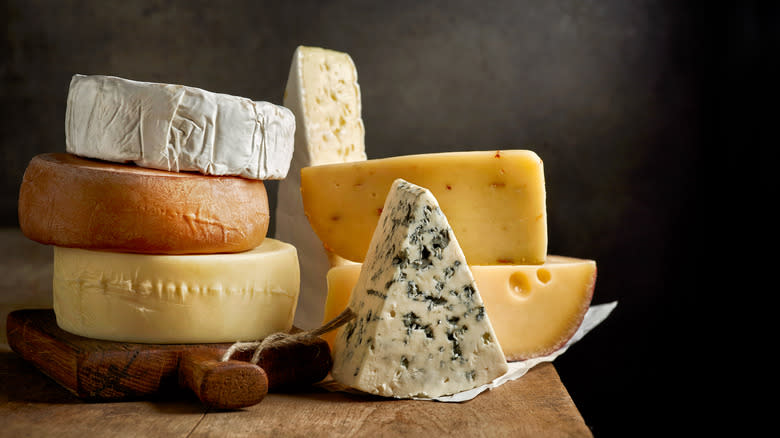
Producing Munster is more time- and labor-intensive than Muenster, and the cost reflects the difference. You can buy a petite Munster (a small, eight-ounce cheese wheel) for around $16 online. As for Muenster, your options are more varied.
Generic grocery store brands will sell you an eight-ounce block of Muenster for around $2. Brand name sliced Muenster will go for around $4 for eight ounces. There are also artisanal Muenster cheeses, which will go for $6 for eight ounces. As you can see, Munster cheese is still double the price of even the highest quality Muenster cheeses.
Read the original article on Tasting Table.

